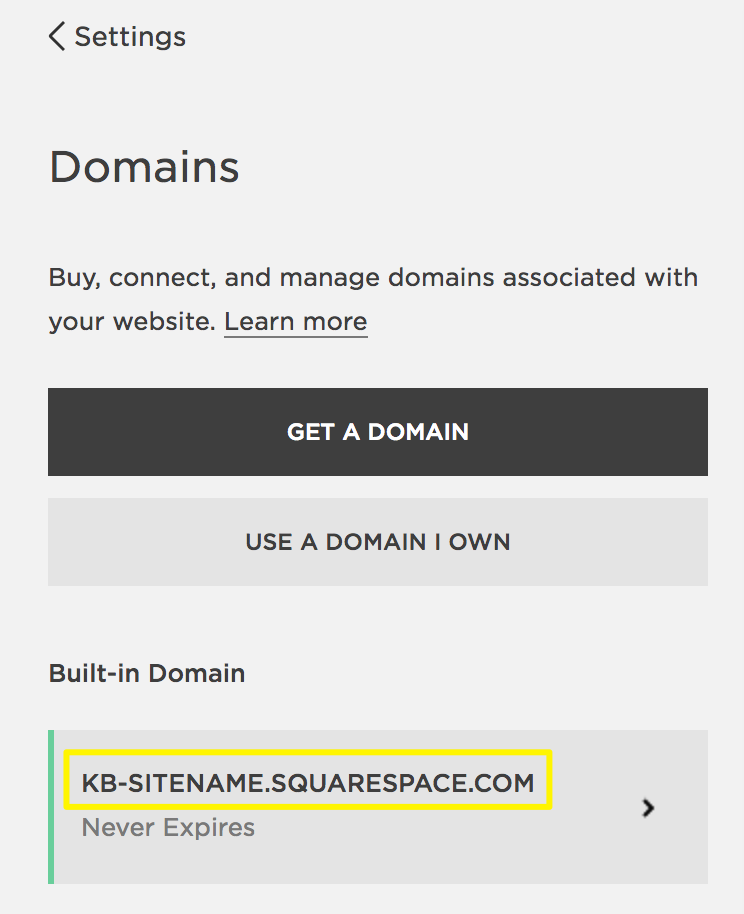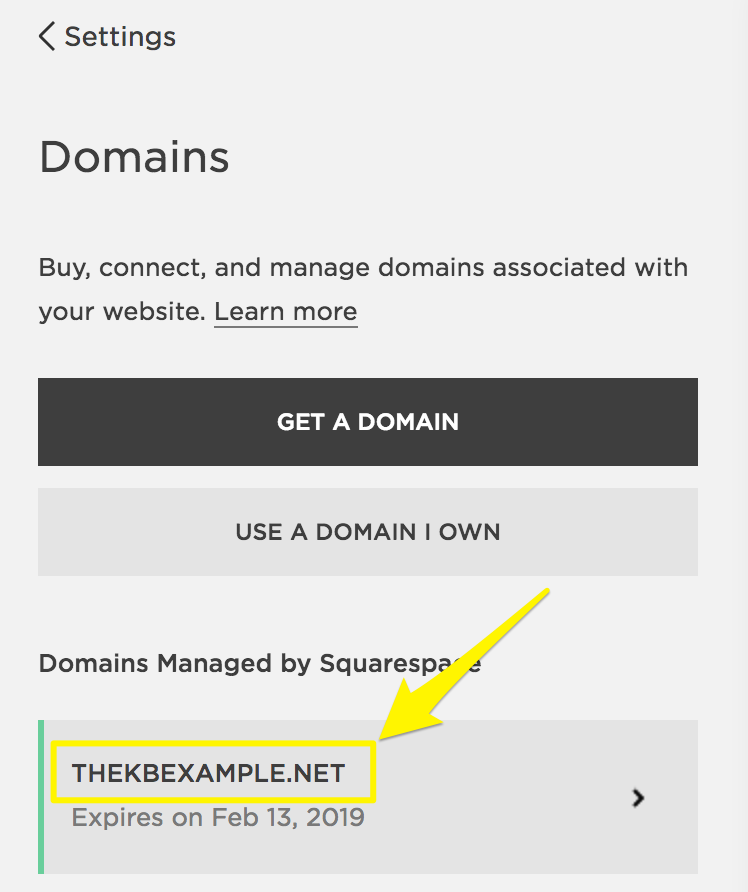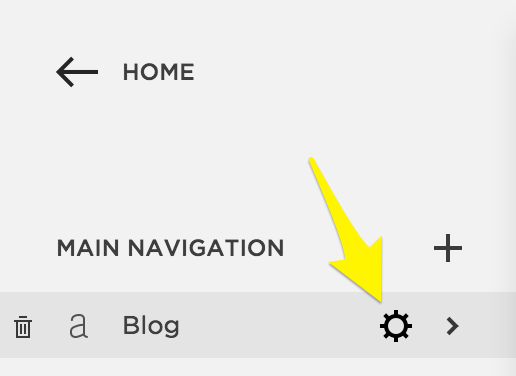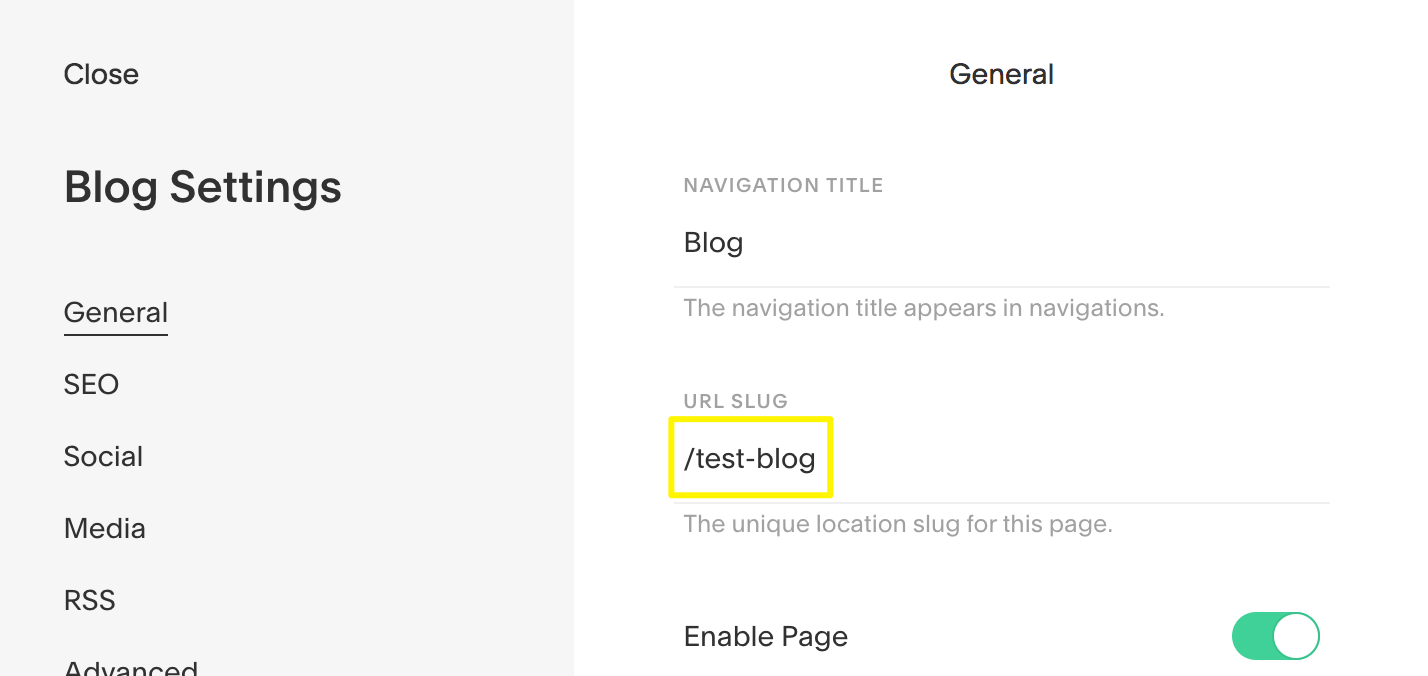How To Get Rss Feed From Squarespace Blog
Search Results
All Categories
Clear
Search
Apply
Search in
Category
Reset
Filter by
Prev
Next
Guides
Log out
Account dashboard
Select your language
https://support.squarespace.com/hc/
/hc/categories/200352188-Knowledge-Base
HELP GUIDES
/hc/categories/200204575
VIDEOS
https://learning.squarespace.com
WEBINARS
https://forum.squarespace.com
FORUM
/hc/requests/new#choose-topic
CONTACT US
LIVE CHAT: CLOSED
LIVE CHAT: OPEN
Login
See All Results
Contact Us
More ➝
Send
Choose a topic
We think this will help:
Contact Squarespace Help
Still need to contact us?
Real-time conversation and immediate answers.
Live Chat
Monday - Friday:
4:00AM to 8:00PM EDT
Send us a message and read our answer when it's convenient for you.
Contact us by email to get help with this topic.
24 hours a day
7 days a week
Log into Squarespace
Contact Us
Regresar
Esta guía no está disponible en español. Serás dirigido a la versión en inglés en 5 segundos.
Watch Video
Por favor, ten en cuenta que este departamento solo ofrece soporte en inglés
Log in for faster support
Log in
Continue as Guest
Recover Account
BOOK NOW
Schedule an appointment to speak to one of our Onboarding Specialists.
We currently offer live chat support in English only.
EMAIL SUPPORT IN SPANISH
CHAT IN ENGLISH
Squarespace 5 Help
For questions about the legacy Squarespace 5 platform, please visit its Help Center:
Back
Regain access to your account or site
If you've tried to recover your Squarespace account and still can't access it, we're here to help. Please enter as much information as you can, but if you're not sure about specific details, provide your best guess.
Before you begin:
• Did you already try to recover your account through the login page? We'll ask you to try that first if you haven't yet.
• For your security, we'll only provide account details to the account holder.
• For help recovering a Google Workspace account, contact us here.
Email address where we can contact you.
What situation led to the trouble accessing your account?
URLs of any websites connected to the account. Enter as many domains as possible.
Please attach both of the following documents:
• A government-issued ID. For example, a driver's license, passport or permanent resident card.
• A bank statement that shows the bank header, bank accountholder name, and the most recent Squarespace charge. You are free to obscure other personal information in the document. (Not required for two-factor authentication issues.)
Note:
• If you entered multiple websites above, attach statements showing the most recent charge associated with every site.
• Ensure your files are .jpg or .png so we can view them.
Request Account Access
Request a Refund
Hear back in 2 business days.
If you have a tax exemption certificate, attach it here. .pdf, .png, .jpeg file formats are accepted.
Use this form to submit a request about exemption from sales tax collected for Squarespace payments.
Enter the details of your request here. If you're not based in a country or state where we collect taxes, and you believe we shouldn't collect taxes from you, please explain.
If you have feedback about how we collect sales tax, submit it here. Your feedback helps make Squarespace better, and we review every request we receive. Please note that we can't reply individually, but we'll contact you if we need more details.
General sales tax feedback
Request an exemption from sales tax
Coronavirus Pandemic
We understand the tremendous challenges the Coronavirus pandemic is causing for people and small businesses across the world. Here at Squarespace Customer Support, we're doing everything we can to answer your questions and provide assistance to our community.
If you need support during these uncertain times, submit the following form and we'll look into options for you. Please provide specific details regarding your issue or request, such as:
• Pause or cancel my subscription
• Discuss options for financial relief from subscription costs
• Help me adjust my site to the current situation
• Advise me on how to best set up my new site
• Enable a specific feature on my site
A member of our team will respond as quickly as possible.
Upload a screenshot of the issue you're having, or the site content you'd like to modify, so we can help you more quickly. Learn how to take a screenshot here: http://sqsp.link/w5Jigj
#
#
Squarespace Scheduling and Acuity Scheduling have merged Help Centers. If you're coming from the Acuity Help Center, you'll find the help you need here. All guides about Squarespace Scheduling also apply to Acuity; the handful of features that are different are clearly marked.
#
#
Please use this form to submit a request regarding a deceased Squarespace customer's site. Our deepest condolences go out to you and your family during this time, and we appreciate your patience as we work through your request.
Due to privacy concerns and restrictions, we unfortunately can't provide you with administrative control of the site. However, if an immediate family member or legal representative completes the form below, we may be able to grant Billing permissions so the site can remain active or cancel any active subscriptions.
Note that Billing permissions don't include the ability to edit the site's content. You can read more about this here.
A note regarding Squarespace 5 sites:
Squarespace 5, our legacy platform, doesn't allow permissions to be edited. However, we can cancel or remove the site.
Submit a request about a deceased customer's website
URL of the site connected to the deceased user's account
Any comments, requests, or concerns we should know?
Please attach the following documents:
• An image of your government-issued ID, such as a driver's license, passport, military ID, or permanent resident card. This is for proof of your relationship to the deceased.
• An image of the deceased person's obituary, death certificate, and/or other documents.
• Any additional documents, such as Legal Representation documentation.
Delete My Account
Before you request to delete your Squarespace account, please review this guide to:
• Understand what happens when we delete your account.
• Make sure it's what you really want to do.
• Take a few steps to prepare. For example, you'll need to cancel all subscriptions first.
Once you submit your request, you'll receive an email from our team to verify your account access and confirm that this request wasn't made in error.
Delete My Account Request Verification Form
Before you provide your government issued ID below, did you know that you can submit a request to delete your account to Squarespace here (without providing your ID)? This form is only for people who have lost access to: (1) their Squarespace account; or (2) the email address associated with their Squarespace account.
Please upload a copy of some form of government issued ID (i.e. driver's license or passport). You may blur out any sensitive information before you upload.
Email address for communication regarding your request
Upload ID
Questions about Squarespace Select
To learn more about Squarespace Select, our premium plan for dedicated site support, visit this Help guide.
If you still have questions about the Select plan, complete the fields below to send us a message.
{ "top::memberareas:billingsignup":"New Release Team (Chat)", "top::memberareas:creatingmemberareas":"New Release Team (Chat)", "top::memberareas:managingmemberareas":"New Release Team (Chat)", "top::billing:student-discount":"New Release Team (Chat)", "top::commerce:products-import":"New Release Team (Chat)", "top::commerce:shipping-labels":"New Release Team (Chat)" }
Send us a message. Business hours are Monday - Friday, 5:30AM to 8PM EDT. Messages sent outside these hours will receive a response within 12 hours.
Tuesday-Thursday:
10:00AM to 1:00PM EST
Squarespace Help
Find answers and resources
See More Results
Browse by product
Websites
Adding content with blocks
Formatting your images for display
Changing colors
SEO checklist
Domains
Connecting a domain
Moving a domain to another site
Renewals and expiration
Transferring a domain
Commerce
Adding products to your store
Connecting a payment processor
Creating discounts
Setting up taxes
Email Campaigns
Building mailing lists
Creating sender profiles
Email campaign best practices
Getting started with Squarespace Email Campaigns
Google Workspace
Using Google Workspace with Squarespace
Adding more Google Workspace users
Signing up for Google Workspace
Renaming a Google Workspace user
Scheduling
Appointment Scheduling Blocks
Getting started with Squarespace Scheduling
Creating and editing appointment types
Squarespace Scheduling FAQ
Member Areas
Creating gated content
Customizing the Member Areas experience
Managing members
Getting started with Member Areas
Video Studio
Creating projects
Getting started with Video Studio
Project steps and sections
Video Studio best practices
Guides by topic
Show more
Show less
Getting started
Everything you need to start and launch your site on Squarespace
Account
Analytics
Get help with your account settings, password, and site contributors
Billing
View reports to gain insight into visitor engagement and sales
Get help with your plans, payments, and subscriptions
Commerce
Learn how to set up, manage, and grow your online store
Domains
Get step-by-step help with registering, transferring, and connecting domains
Google Workspace and custom email
Images and videos
Set up a custom email address with your domain
Make your site stand out with images, videos, and banners
Integrations and extensions
Add third-party integrations to help you manage, optimize, and expand your site
Marketing
Spread the word about your business with Squarespace's all-in-one marketing tools
Pages and content
Privacy and security
Learn how to build and edit your site with pages, sections, and blocks
SEO
Get information about security, SSL, data privacy, and policies about Squarespace
Learn how to optimize your site for search engines with the best keywords and content
Squarespace on mobile
Explore how your site works on mobile and manage your site with our mobile apps
Squarespace Scheduling
Book and manage appointments with integrated online booking
Technical issues and contact us
Troubleshoot technical and speed issues with your site
Templates and design
Learn how to customize fonts, colors, and other design features
Tips and advice
Read our best practices, tips, and tricks for getting the most out of Squarespace
Video Studio
Create videos to market your business on social
Learn by video
All About Images
7 videos
Introducing Commerce
4 videos
Build your first Squarespace site
1 video
Your Pages & Navigation
7 videos
See all videos
Community forums
Join our active community of Squarespace users and professionals for advice, inspiration, and best practices.
Squarespace Forum
Squarespace webinars
Circle Forum
Free online sessions where you'll learn the basics and refine your Squarespace skills. Everyone is welcome—no website required.
Upcoming Webinars
Hire an Expert with Marketplace
Squarespace Experts can help you polish an existing site, or build a new one from scratch.
Browse Experts
Can't find what you're looking for?
We'll help you find an answer or connect you with Customer Support through live chat or email.
Contact Us
No results
Close
How would you rate your experience with the Help Center?
Somewhat dissatisfied
Very dissatisfied
Neither satisfied nor dissatisfied
Somewhat satisfied
Feedback
Very satisfied
Next
Can you tell us why? (Optional)
How was your experience looking for help today?
Very difficult
Somewhat difficult
Neither easy nor difficult
Somewhat easy
Very easy
Why's that? (Optional)
I'm not sure
Did you find the answer you were looking for in the Help Center?
No, my issue was not resolved
I found it elsewhere
Yes, partially
Yes, completely
Where did you best find your answer?
Select
Video
Guide
Webinars
Forum
Other
Thanks for your feedback
Acuity Scheduling
Can't log in?
I don't have an account
Squarespace
Log into your account so we can customize your experience.
Which account do you need help with today?
Community Forum
Get help from our community on advanced customizations.
Explore the Forum
Webinars
Sign up for an interactive session where our experts walk you through Squarespace basics.
Join a Webinar
Can't find what you're looking for?
We'll help you find the answer or connect with an advisor.
Contact Us
Get help from our community
Get help from our community on advanced customizations.
search in the forums
Hire a Squarespace Expert
Stand out online with the help of an experienced designer or developer.
get matched
In this guide
Was this guide helpful?
People also viewed
Accessing this feature
Note
Tip
Note: While our most popular guides have been translated into Spanish, some guides are only available in English.
Finding your RSS feed URL
An RSS feed is an .xml file that contains your newest content. News aggregators, feed readers, email subscriptions, and podcast lists all pull content from RSS feeds.
Squarespace websites have built-in RSS feeds for all blog, products, events, gallery, and album pages.
To learn how to use RSS feeds and integrate RSS options into your site, visit Using RSS feeds.
This guide explains how to find your RSS feed URL.
Watch a video
RSS feed URL structure
Your page's RSS feed URL is made up of your full URL, followed by the page slug, and ending with ?format=rss.
If you use your built-in domain, it will look like this, replacing sitename.squarespace.com with your own built-in site name and pageslug with the slug for the individual page:
http://sitename.squarespace.com/pageslug ?format=rss
If you have a custom domain, it will look like this, replacing www.yourdomain.com with your own domain and pageslug with the slug for the individual page:
http://www.yourdomain.com/pageslug ?format=rss
One way to find your RSS feed URL is to go to your website when you're not logged in, open the page you want to find the feed for, and then add ?format=rss to the end of the URL. Note that this may not work for content you've accessed through an index page, as index pages sometimes add extra characters to the URL.
You can also find the components of your RSS feed URL within the Squarespace platform:
- To find the built-in or custom domain for your site (shown in green above), see Step 1.
- To find the page slug (shown in red), see Step 2.
Note: Your URL will have more characters if you add categories or tags.
Step 1 - Find your site name or domain
If you don't have a custom domain, you'll use the site name from your built-in Squarespace URL. If you have a custom domain, you can use either the custom domain or your built-in Squarespace site name.
In general, we recommend you use your built-in domain. This is more reliable, as any domain changes or errors won't affect the RSS content. Typically your visitors won't see the URL; for podcasts, for example, the URL won't be listed on Apple Podcasts or visible to subscribers.
You'll find your built-in and custom domains in the Domains panel. In the Home menu, click Settings, and then click Domains.
You can also press the ? key while any panel is open and search domains.
Built-in domain
Use the URL that appears under Built-in Domain:

The sitename goes into the RSS feed URL like this:
http://kb-sitename.squarespace.com/pageslug?format=rss Custom domain
For custom domains, you'll add www. followed by the full URL (including .com, .net, etc) that appears under Domains Managed by Squarespace or Domains Managed by Third-Party:

The custom domain goes into the RSS feed URL like this:
http://www.createbeautifulwebsite.net/pageslug?format=rss Step 2 - Locate your page slug
The page slug is the part of the URL that's specific to an individual page.
In the Home menu, click Pages. Hover over the page and click the ![]() next to the title to open page settings.
next to the title to open page settings.

In the URL Slug field, you'll find your page slug.

The page slug goes into the RSS feed URL like this:
http://sitename.squarespace.com/test-blog?format=rss Or, if you have a custom domain:
http://www.yourdomain.com/test-blog?format=rss Adding categories or tags (optional)
To create a feed that only pulls special content, you can modify an RSS feed URL to include categories or tags. For example, you could create an RSS feed for your blog page that only pulls blog posts that have been tagged with News.
Category RSS URLs
Create an RSS URL for posts with a specific category by inserting category=Categoryname& between the ? and format=rss at the end the URL, like this:
http://sitename.squarespace.com/pageslug/?category=Categoryname&format=rss Then replace Categoryname with the name of the category. For example, the RSS URL for a category named "News" would look like this:
http://sitename.squarespace.com/pageslug/?category=News&format=rss If a category name is more than one word, replace the space between each word with %20. For example, the RSS URL for the Category "New Art" is:
http://sitename.squarespace.com/pageslug/?category=New%20Art&format=rss Tag RSS URLs
Create an RSS URL for posts with a specific tag by inserting tag=Tagname& between the ? and format=rss at the end the URL, like this:
http://sitename.squarespace.com/pageslug/?tag=Tagname&format=rss Then replace Tagname with the name of the tag. For example, the RSS URL for a tag named "Dogs" is:
http://sitename.squarespace.com/pageslug/?tag=Dogs&format=rss If a tag name is more than one word, replace the space between each word with %20. For example, the RSS URL for the tag "Happy cats" is:
http://sitename.squarespace.com/pageslug/?tag=Happy%20Cats&format=rss Next step
Visit Using RSS feeds to learn how to use your RSS feed URL to create email subscriptions, podcast lists, and integrations with blog feed readers and news aggregators; and for troubleshooting help.
Was this article helpful?
156 out of 289 found this helpful
How To Get Rss Feed From Squarespace Blog
Source: https://support.squarespace.com/hc/en-us/articles/206543187-Finding-your-RSS-feed-URL
Posted by: whiteprodins.blogspot.com

0 Response to "How To Get Rss Feed From Squarespace Blog"
Post a Comment